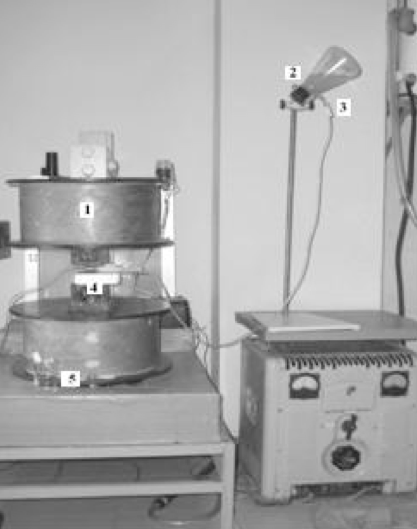Mechanisms of intensification of sorption process of heavy metal ions by the magnetically controlled biosorbents for the purification of the waste water
New mechanisms for the intensification of the process of heavy metal ions sorption by magnetically modified biosorbent, based on yeast S. cerevisiae for wastewater treatment, were revealed. New equipment for magnetohydrodynamic mixing (MHDM) of biosorbent with magnetic fluid in the combined electric and magnetically fields were developed for the first time. This installation allowed obtaining the magnetically operated biosorbent with stable magnetic properties and sorption capacity of not less than native yeast. The dependence of magnetically operated biosorbent sorption capacity was revealed on the way of its modification, on the external magnetic and electric fields, on pH of the medium, on the ratio of magnetic fluid (magnetic nanoparticles) and biosorbent, on biosorbent charge, on the spatial distribution of magnetic nanoparticles in the sorbent, on the morphological characteristics of the surface of yeast S. cerevisiae cells. For the first time the correlation was established between the electrophoretic mobility of yeasts, zeta potential size, fractal dimension and sorption characteristics of biosorbent. Sorption capacity of magnetically operated biosorbent which is obtained by the developed method is not reduced compared to the native yeast due to the fact that the magnetite nanoparticles penetrate periplasmatic space of the yeast cell wall, which is confirmed by magnetic susceptibility measurements and data of magnet biosorbent magnetic force microscopy systems "yeast cell-magnetic nanoparticles" size and zeta potential of elecrophotophoretic mobility of the magnetically operated biosorbent. For the first time the new method of obtaining of a magnetic fluid with controlled size and shape of magnetic nanoparticles was developed to improve the penetration of magnetic nanoparticles in periplasmatic space. Search of microorganisms including S. cerevisiae yeast was conducted for determining the potential producers of the biogenic magnetic nanoparticles by bioinformatics methods and the proteins involved in the synthesis of magnetic nanoparticles with the defined properties. Modern design of utilization of these proteins in vitro was studied and the prospects of the use of these microorganisms for biosorption of heavy metal ions and biometallurgy. For the first time it was possible to obtain the content of iron ions below the limit allows by the standart in wastewater treatment of Slavutych city (Kyivska region) from iron ions using magnetically-labeled biosorbent based on the yeast S. cerevisiae.

| Attachment | Size |
|---|---|
| 796.85 KB |




